Elevate your design and manufacturing processes with Autodesk Fusion
Yin and Yang – How Wireless Charging is the Balance of Electricity and Magnetism.
Sorry to break it to you guys, but wireless charging isn’t exactly new. In 1902 Tesla filed a patent for an “Apparatus for Transmitting Electrical Energy” where he outlined how electricity could be transmitted from one conductor to another. And if you’ve ever used an electric toothbrush, then you’ll know that wireless charging has already been in use for years. So why is there now such a focus on wireless charging these days, when it has already been around for years?
With the explosion of smartphone use around the world, the growth of electrical vehicles, and a culture that frowns upon fossil fuels, wireless charging might finally be ready for its moment of fame. But how exactly does wireless charging work? It’s not some black magic; it’s science!
Electricity and Magnetism, Together at Last
Before diving into the details of wireless charging, let’s back up for a minute and consider how electricity and magnetism work together. What you might now know about these two forces is that they’re two sides of the same coin. For example, running an electric current through a wire will create a magnetic field. And vice versa, creating an alternating magnetic field and placing a copper wire next to it will cause an electric current to flow through the wire.
Don’t believe us? You can create your very own electromagnet with some simple everyday objects, like a battery, copper wire, and iron nail:
- You first need to wrap the copper wire around the iron nail in a coil. And then you’ll take the ends of your copper wire and attach it to the terminals of your battery.
- When you connect the battery to a copper wire, an electric current will start to flow through your wire. Obvious right? Now take something like a paperclip and place it next to your wire and it will stick to it, magnetism!
- You can even make a second coil of wire, put it next to your first coil, then use a voltmeter and you’ll get a voltage reading on the second coil.
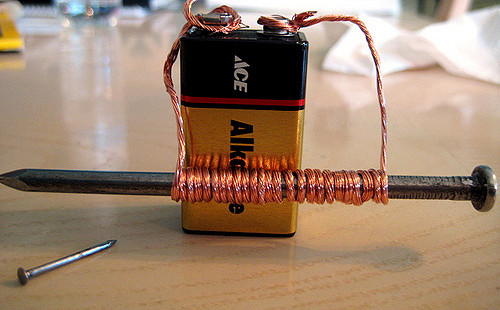
It’s this direct relationship between electricity and magnetism, called electromagnetism, that is at the heart of wireless charging. How wireless charging works is not much different than the simple experiment that we outlined above and uses an electromagnetic field to transfer energy between something like your smartphone and a wireless charging pad. Here’s how wireless charging works in a nutshell:
- First, the voltage coming is converted to Alternating Current, which gets sent to a coil in a wireless charging pad. This is called the transmitter coil.
- The electric current that flows through this coil produces a magnetic field, and when you place another compatible device like a smartphone next to this pad with another coil embedded inside, a magnetic field is created between both devices.
- Now an electric current can flow to the receiving coil in your smartphone. This current is then used to charge your smartphone’s battery, all done without needing any wires!

More simple than you thought, right? Wireless charging is just using technology that has existed for more than a century and takes advantage of the intimate relationship between electricity and magnetism. It’s the perfect yin and yang balance found in nature.
For wireless charging to power your stuff, you need particular pieces hardware in both your transmitter and receiver devices. For example, if you place a smartphone on a wireless charging pad that doesn’t have a receiver coil inside, then your device won’t charge.
So What’s the Catch?
Does all of this wireless charging science sound too good to be true? Depending on who you ask. For a technology that was invented nearly a century ago by Tesla, we’re still struggling to make headway with some very fundamental issues, including:
You still have to be plugged in
The irony in the whole wireless charging craze is that you still have to plug something in! Does this just complicate matters when instead of having to plug your smartphone in, you have to plug in a wireless pad? And considering that your smartphone has to stay on the pad, it limits your ability to use it. Pull out a wired charging cable, and you can both charge and use your phone at the same time.
It’s not faster…yet
Wireless charging is also much slower than wired charging. For example, Anandtech tested a Samsung Galaxy S6 and was able to charge to 100 percent in about 1.5 hours when plugged in, but that same charging cycle took over 3 hours when charged wirelessly! Wireless charging has a long way to go if it’s going to keep up with the efficiencies of wired charging.
The range just isn’t there
The reach of an electromagnetic field quickly drops the farther you move two coils away from each other, and it’s because of this that you’re forced to keep your smartphone directly on a wireless charging mat. While this has been remedied by some newer technologies that we’ll discuss later, the range issue is still a problem for most wireless charging technologies.
Coils take up valuable real estate
Another issue is the size of the inductive coil that has to be placed in our smartphones to allow them to be charged wirelessly. With today’s expectations for ultra-thin devices, this can be a problem for engineers trying to figure out how to squeeze all of that copper into such a small and dense package.
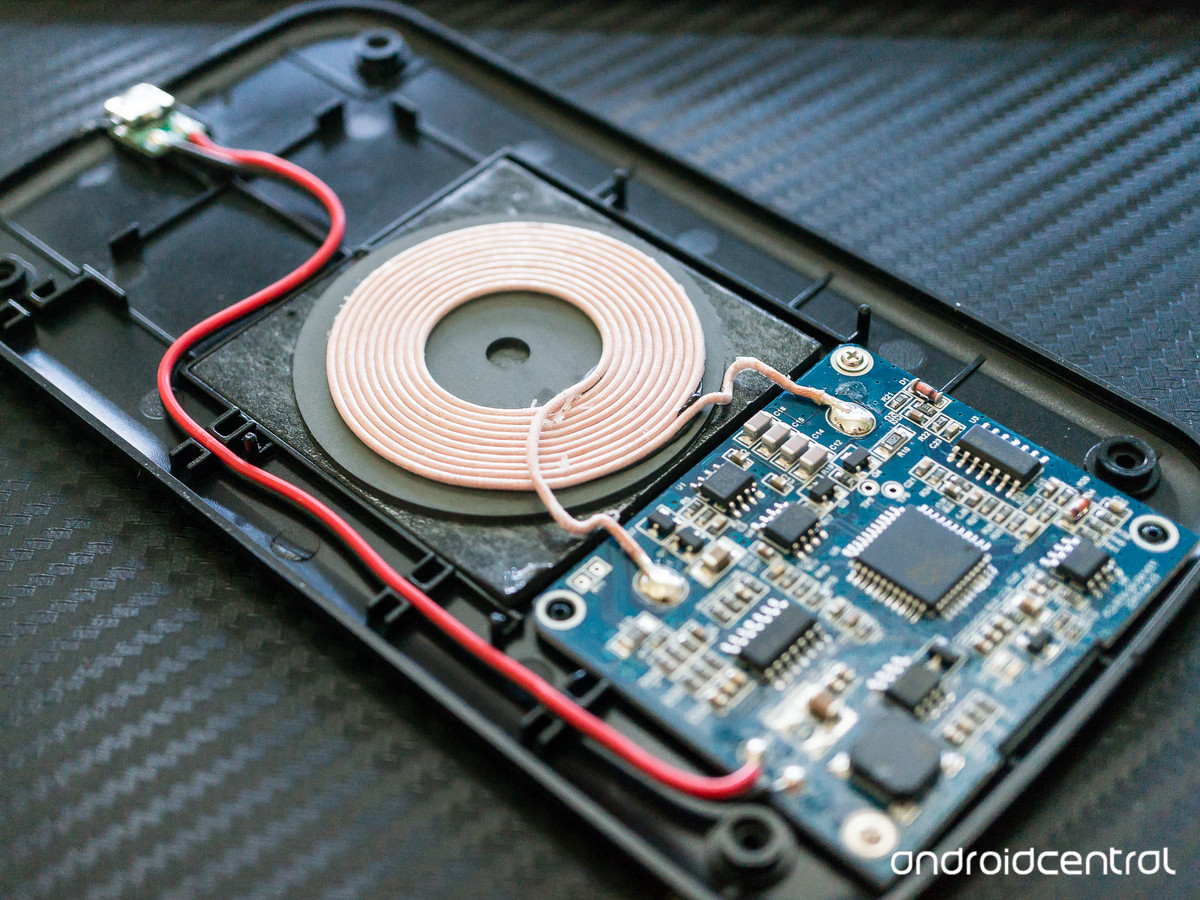
The competing standards
The last issue, and probably the most important is the fact that quite a few competing standards are floating around, all with their own proprietary technologies. These include:
-
Qi

This technology is backed by the Wireless Power Consortium and has some strong partnerships with Microsoft, Verizon, Samsung, Sony and 500 other companies. Their focus is primarily on wireless charging for smartphones and other low-power devices.
-
A4WP
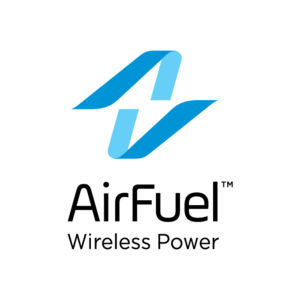
This technology is backed by the Alliance for Wireless Power (now officially Airfuel Alliance) and uses a similar wireless technology like Qi, but it’s made for higher-power devices and has backing from some big names like Canon, Dell, HTC, Intel, and Qualcomm.
-
PMA

This technology is backed by the Power Matters Alliance (now a part of the Airfuel alliance), and comes in the form of a Powermat that both Google and Starbucks support. Starbucks uses this powermat technology in some of their coffee shops, providing wireless charging to customers while they sip their lattes.
The whole problem with these competing standards comes down to operability between devices and eventual obsolescence. Is this going to turn out like the HD-DVD and Bluray war back in the day, where the wireless technology that loses will be useless in all of the devices in which it’s embedded?
To get wireless charging technology moving forward, we need to settle on one standard that can be used in all devices. Which one it will be is still up in the air, but when we do arrive at a point in time where there’s one standard to rule them all, what will the future of wireless charging look like?
An Untethered Future
One day, hopefully soon, we’ll extract ourselves from our tethered reality into the world that is 100% wireless. When that future arrives, there are endless possibilities, including:
Self-Charging Laptop Stations
Work is already underway by Intel to add integrated wireless charging capabilities into the laptops that we use every day. Not only would these laptops be able to charge themselves wirelessly, but they will also act as a base station of the sorts for charging all nearby smartphones and wireless peripherals. Could we soon enter an age where batteries are being charged at all hours of the day, just by being near your computer?
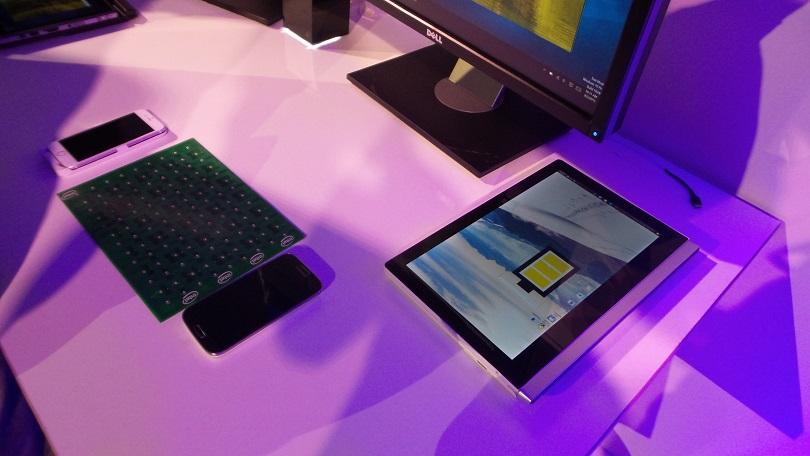
Wireless Electric Vehicles
We might even see wireless chargers being built into parking spots and charging stations for electrical vehicles. BMW recently announced that it’s working on a wireless charging system for its i8 electric sports car that can fill up its battery in only 2 hours! Maybe the next time you’re out to grab a bite to eat or catch a movie, you’ll be able to charge your car wirelessly at the same time.
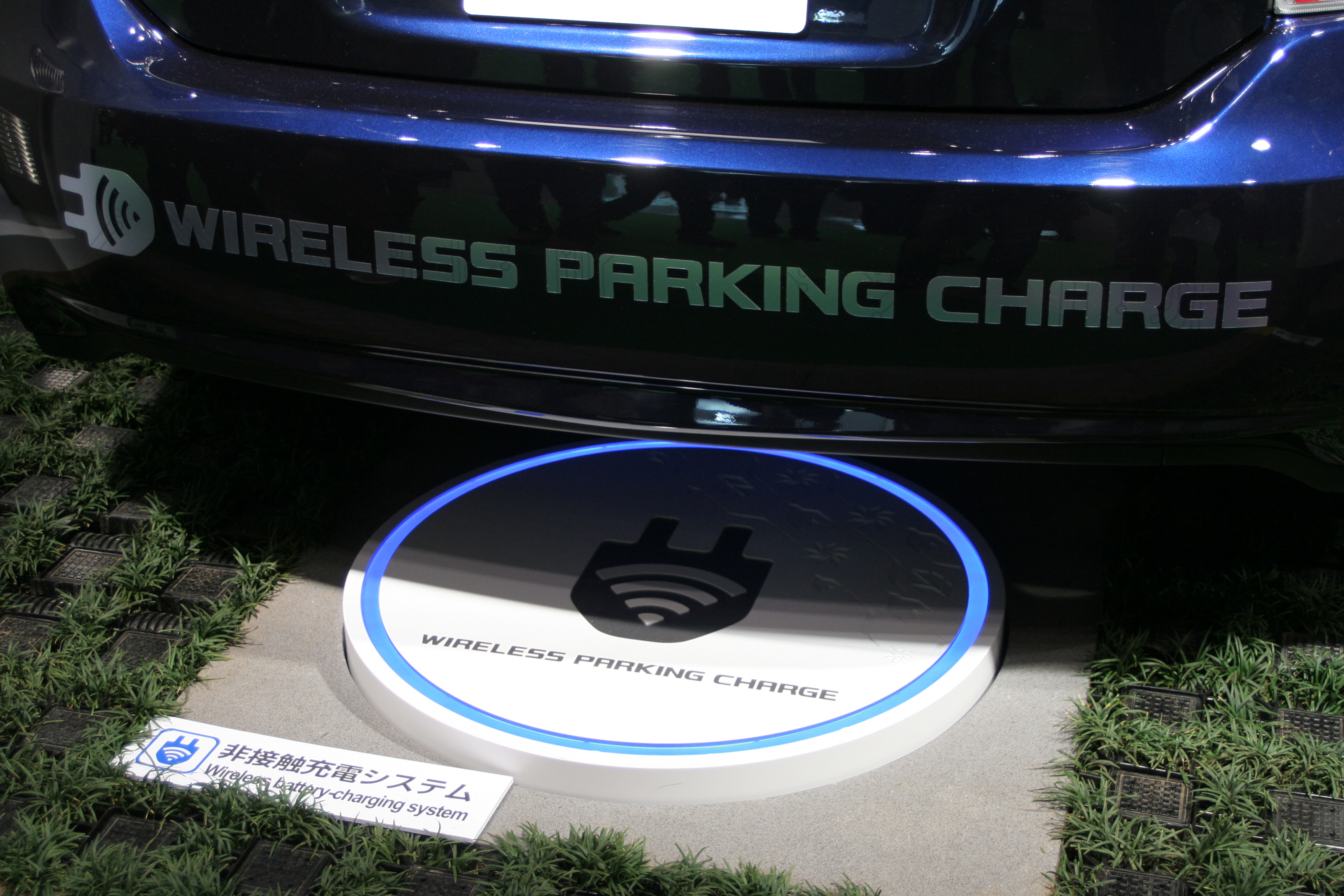
Driving While Recharging
Forgot about having to leave your car sitting in one spot to have it charge. Over in England, they’re testing the ability to charge vehicles while they’re driving on top of wireless devices embedded directly into the asphalt. And over in South Korea, they’re working on electric buses that can charge as they drive. Now your morning commute can leave you with a fresh battery to start your day!
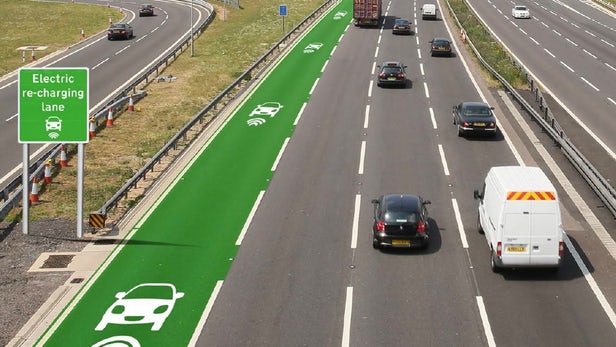
Public Wireless Charge
What if wireless charging was as freely available as something like WiFi? There are companies out there working to make this a reality by integrating wireless charging stations into public locations. That way, when you’re out and about you never need to worry about keeping your smartphone charged. Just step within the range of a wireless charging station, and you’ll be good to go.
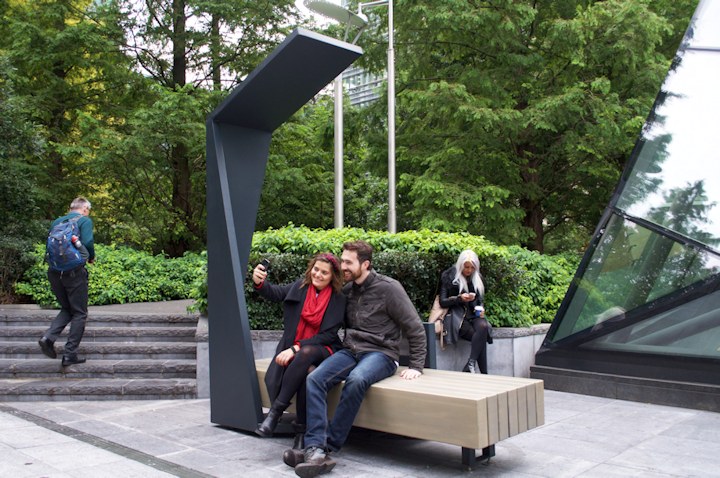
Furniture and Everyday Objects
Last but not least, we can’t forget about all of the day-to-day objects in our homes that would benefit from wireless charging. For example, Ikea is working on a new lineup of furniture that includes lamps and tables with integrated wireless charging stations. And if we can get wireless charging working for higher power devices then we might even see simple gadgets like blenders and vacuums being operated wirelessly around your home.
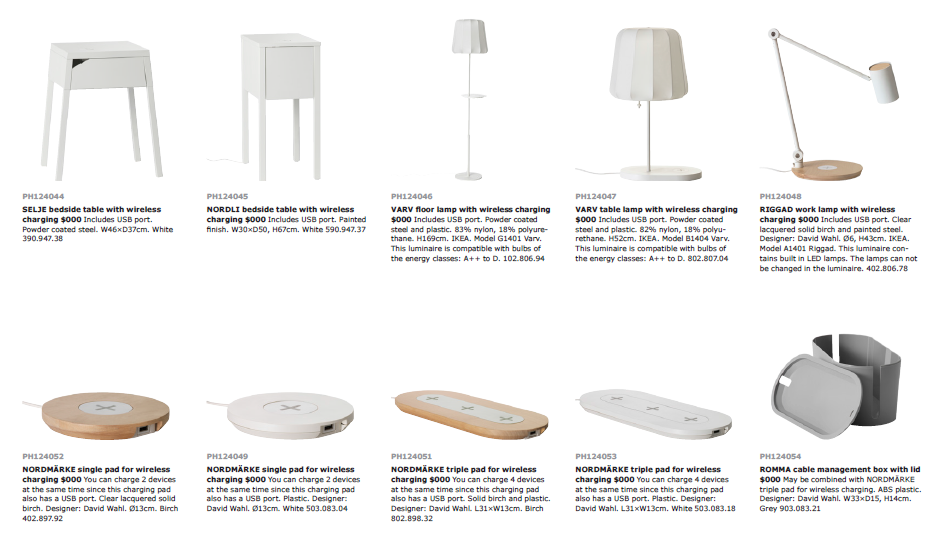
Today’s Realities
While all of these future possibilities sound impressive, the technology that we have to work with today is still largely strapped to a device that needs to be plugged in, with a few exceptions. Here are all of the current wireless charging technologies in development at a glance that you can use either now, or very soon:
Powermat
This technology is being developed by Duracell and creates an area on a table where you can place your smartphone and have it charge wirelessly. Starbucks is all about this new technology and has partnered with Duracell to put their powermats in their coffee shops around the globe.
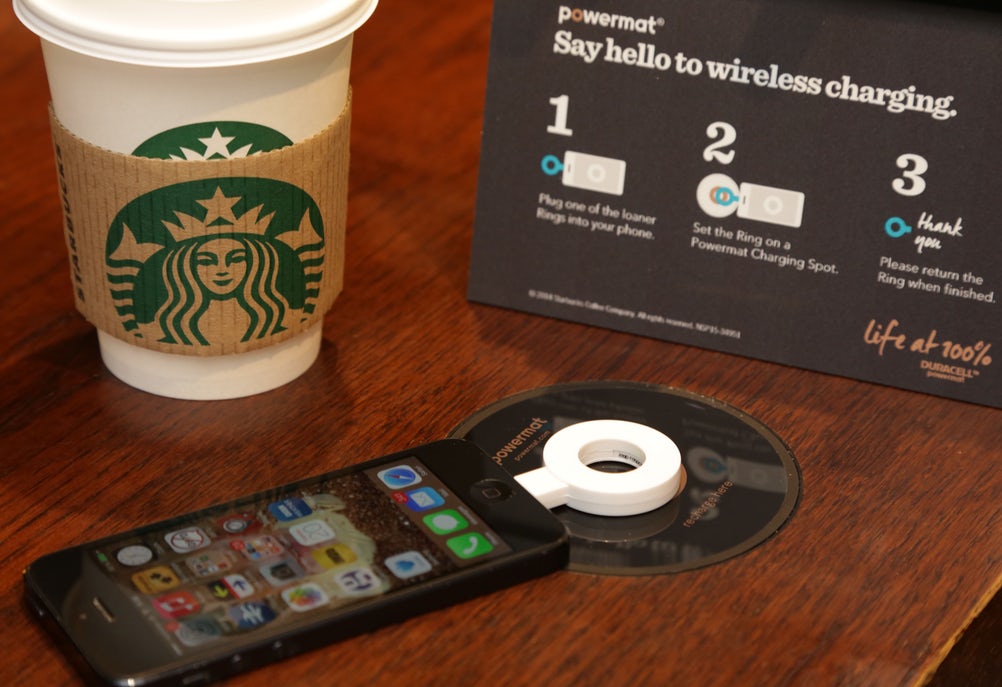
Wireless Charging Bowl
Don’t feel like putting your phone on a mat? Intel took the wraps off of a wireless charging bowl back at the Consumer Electronics Show (CES) in 2014. Imagine just being able to walk in your home, empty your pockets into said bowl, and enjoy a fully charged phone shortly after.
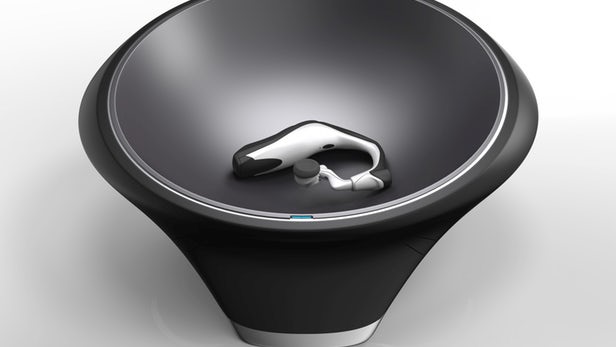
Multi-Device Charging
Over in South Korea, the Korea Advanced Institute of Science and Technology (KAIST) is working on a technology that can power up to 40 smartphones simultaneously, even up to 5 meters away! This technology is still in the prototyping stages but might hold the key to making wireless charging a possibility in public spaces.
Ultrasonic Charging
Last, we’ve got a technology that is taking an entirely different path by using ultrasound instead of magnetic induction to make wireless charging a reality. uBeam was introduced in 2011 and works by converting electricity to sound waves, which can be sent through the air using ultrasound. A receiver will then intercept the sound wave and turn it into electricity that your device can use.
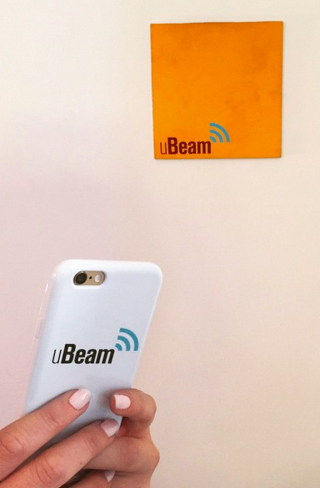
Are We Ready Now?
It has been over a century since we first discovered the ability to transmit electricity wirelessly, all thanks to Tesla. Now the question on everyone’s mind is whether wireless charging has finally matured enough to serve the needs of our mobile future. Will we one day live in a world where electric cars can recharge their batteries simply by driving? Or maybe we’ll be able to walk down the street and have our phones charge wirelessly just sitting in our pockets?
The future’s looking bright for this budding technology, but we still have ways to go to make it into the reality we want it to be. There are still a lot of issues to iron out, like slow charging speeds, range issues, and a bunch of competing standards. Whichever way this technology goes, one thing is for certain; we’re ready to untether ourselves from this wired world and bring on the age of wireless power for all.
Design wireless charging in your PCB today, just download Autodesk EAGLE for free to get started!